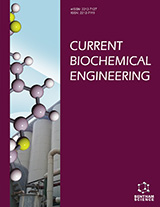Abstract
Background: Biodiesel represents an interesting alternative to fossil fuels. Traditionally the standard method for biodiesel production from oils is alkaline–catalyzed transesterification. Chemical catalysis can be replaced by enzymatic catalysis using lipases (EC 3.1.1.3, triacylglycerol acyl hydrolases), obtained from plants, animals or microorganisms. Enzymatic catalysis has important advantages compared to chemical catalysis, as lower energy consumption and undesirable side-reactions do not occur originating pure compounds. However, some problems should be overcome to achieve a real alternative to chemical catalysis, such as the prize, the stability, and the reutilization of the biocatalyst.
Results: The review consists of an update of the state of the art of enzymatic biodiesel production, including legislation, feedstocks, lipases used for biodiesel synthesis, the role of acyl acceptors and strategies to avoid lipase inactivation, the mechanisms proposed for biocatalysis and the enzymatic bioreactors used. In addition, the economics of the bioprocess is also presented. Conclusion: Nowadays, there are already some examples of enzymatic processes for biodiesel production implemented at industrial scale and the number of pilot and industrial scale plants has greatly increased in the recent years. In spite of this trend, the chemical catalysis process still remains the most popular on an industrial scale mainly due to the high cost of commercial lipases. Thus, it is necessary to improve the enzymatic technology, increasing the productivity of the bioprocess and reducing the cost of the bioprocess. To attain this goal, it is necessary to act in a multidisciplinary approach of Genetic engineering, Bioprocess engineering, including the production of recombinant lipase in the most adequate cell factory, Enzyme engineering and applied Biocatalysis. It is a fact that the approach to “create” by genetic engineering, a lipase with a high tolerance to methanol, high biocatalyic performance and high resistance to work at higher temperatures and under harsh conditions is not corresponding with the important advances as compared to the other aspects. Also, the use of low cost non-commercial biocatalysts, presenting both high transesterification activity and operational stability, as an alternative to commercial biocatalysts, is a solution to reduce enzymatic biodiesel production costs, making it competitive with chemical processes. The price of biodiesel is highly affected by the market price fluctuation of oil feedstock. Thus the commercial efficiency and competitiveness of biodiesel market needs the development of high-valued product from the FAMEs as rawmaterial, under the concept of a biodiesel refinery. Other approach to minimize the cost of the global process is the production of heterologous lipases, using the crude glycerol obtained in the same biodiesel industry, without high purification, as carbon source. The presence of low methanol concentration and other possible contaminants jointly in the matrix of crude glycerol is not a problem for P. pastoris, one of the most popular cell factories to produce recombinant lipases. In conclusion, enzymatic biodiesel, as a green alternative to chemical biodiesel, has a potential economic growth in the near future.Keywords: Biodiesel, lipases, immobilization, enzymatic reactors, legislation, oils feedstocks, economics.
Graphical Abstract
 40
40 4
4 1
1
















